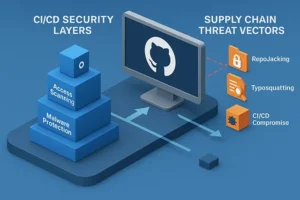Exploring the Power of Ethereum-based dApps: Revolutionizing Decentralized Applications Modern New World

The world of blockchain technology has paved the way for revolutionary applications, and Ethereum-based dApps (decentralized applications) have emerged as game-changers. You’ve probably read it already: The Ultimate Ethereum Mining Guide: A Step-by-Step Tutorial for New Beginners Modern. In this article, we will delve into the concept of Ethereum-based dApps, their significance in the blockchain landscape, and how they are transforming traditional applications. As Ethereum continues to gain prominence as a leading blockchain platform, dApps built on its infrastructure are redefining industries and enabling decentralized solutions.
See also : Blockchain and Digital Identity: Revolutionizing Security and Privacy Modern

I. Basics of Ethereum-based dApps
To understand Ethereum-based dApps, it’s essential to grasp the fundamentals of Ethereum itself. Ethereum is a decentralized blockchain platform that empowers developers to build and deploy smart contracts. These smart contracts are self-executing agreements with predefined rules and conditions, ensuring transparency and trust in transactions. Additionally, Ethereum introduced two essential token standards: ERC-20 and ERC-721. The ERC-20 standard allows for the creation of fungible tokens, while ERC-721 enables the development of unique non-fungible tokens (NFTs).
II. Understanding dApps
Decentralized applications, or dApps, are a fundamental component of Ethereum’s ecosystem. These applications leverage the power of blockchain technology to provide decentralized and transparent solutions. Unlike traditional centralized applications, dApps are built on open-source protocols, allowing for peer-to-peer interactions without intermediaries. They offer increased security, immutability, and censorship resistance.
III. Building dApps on Ethereum
Developing dApps on Ethereum requires an understanding of the tools and frameworks available. Developers can choose from various programming languages, including Solidity and Vyper, specifically designed for smart contract development on Ethereum. Additionally, Ethereum offers a range of development tools and frameworks like Truffle, Remix, and Hardhat, which streamline the development and testing process. These resources enable developers to create robust and scalable dApps on the Ethereum platform.
IV. Features and Benefits of Ethereum-based dApps
Ethereum-based dApps offer a multitude of features and benefits that set them apart from traditional applications. Firstly, the utilization of smart contracts ensures reliability and transparency, eliminating the need for intermediaries and reducing the risk of fraud. Secondly, the Ethereum ecosystem boasts a vibrant and active community of developers, providing support, collaboration, and constant innovation. Moreover, the interoperability facilitated by ERC token standards allows dApps to seamlessly integrate with other applications, expanding their reach and functionality.
V. Examples of Ethereum-based dApps
Ethereum-based dApps have gained significant traction across various industries. One prominent sector is Decentralized Finance (DeFi), where dApps facilitate lending, borrowing, and yield farming. Platforms like Compound, Aave, and Uniswap have revolutionized the financial landscape by providing decentralized alternatives to traditional financial services. Another noteworthy application of Ethereum-based dApps is in the NFT space, where platforms like OpenSea and Rarible enable the creation, buying, and selling of unique digital assets. Additionally, decentralized voting and governance systems, such as Aragon and DAOstack, empower individuals to participate in decision-making processes transparently and securely.
VI. Challenges and Constraints in Developing Ethereum-based dApps
While Ethereum-based dApps offer immense potential, they face certain challenges. Scalability and transaction costs remain significant hurdles for the Ethereum network. High gas fees and network congestion have raised concerns about the efficiency of dApps, prompting developers to explore layer-2 solutions and alternative blockchains. Additionally, ensuring the security of smart contracts is crucial to prevent vulnerabilities and potential exploits. Smart contract auditing and rigorous testing processes are necessary to mitigate these risks and protect user funds.
VII. Future of Ethereum-based dApps
The future of Ethereum-based dApps looks promising as the Ethereum community actively works on addressing scalability issues. Ethereum 2.0, also known as Ethereum’s upgrade to a proof-of-stake consensus mechanism, aims to improve scalability, reduce energy consumption, and enhance transaction throughput. Layer-2 solutions, such as Optimistic Rollups and zk-rollups, offer scalability solutions by processing transactions off-chain and batching them on the Ethereum mainnet. These advancements will pave the way for a more efficient and scalable ecosystem for dApps.
Furthermore, interoperability is a key focus for Ethereum. Initiatives like the Ethereum Virtual Machine (EVM) compatibility on other blockchains and the development of cross-chain bridges aim to create a connected blockchain ecosystem. This interoperability will enable dApps to seamlessly interact with different blockchain networks, expanding their functionality and user base.
In terms of applications, the potential for dApps extends beyond DeFi and NFTs. Sectors like supply chain management, healthcare, energy, and gaming are exploring the possibilities of Ethereum-based dApps to enhance transparency, efficiency, and security within their respective industries. The programmable nature of smart contracts opens doors for automated processes, secure data sharing, and decentralized governance in various sectors.
VIII. Conclusion
Ethereum-based dApps have ushered in a new era of decentralized applications, revolutionizing traditional industries and empowering individuals with transparency and control over their digital interactions. With Ethereum’s robust infrastructure, smart contract capabilities, and active developer community, dApps have become powerful tools for transforming the way we transact, create, and govern.
While challenges like scalability and security remain, Ethereum is actively working towards addressing these issues and paving the way for a more scalable and secure ecosystem. The future holds immense potential for Ethereum-based dApps to expand into new sectors and provide innovative solutions.
As the world embraces decentralized technologies, it is crucial for businesses, developers, and users to understand the power and benefits of Ethereum-based dApps. By leveraging the decentralized, transparent, and secure nature of dApps, we can unlock a future where trust, efficiency, and inclusivity are at the forefront of our digital interactions.
And for those of you who want to grow your Instagram account, you can directly use our service free instagram followers and you can like your post on instagram with Free instagram likes







